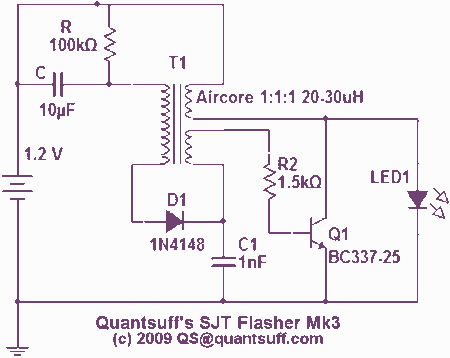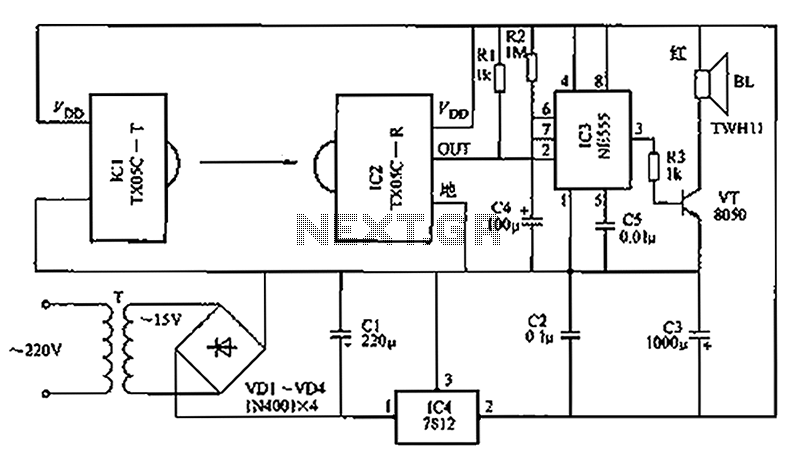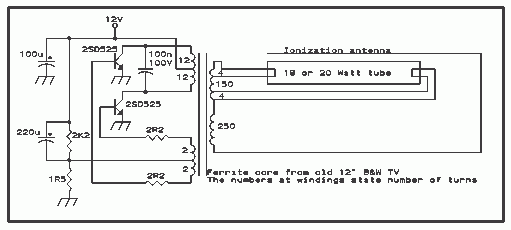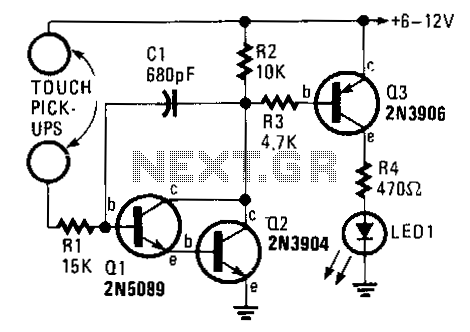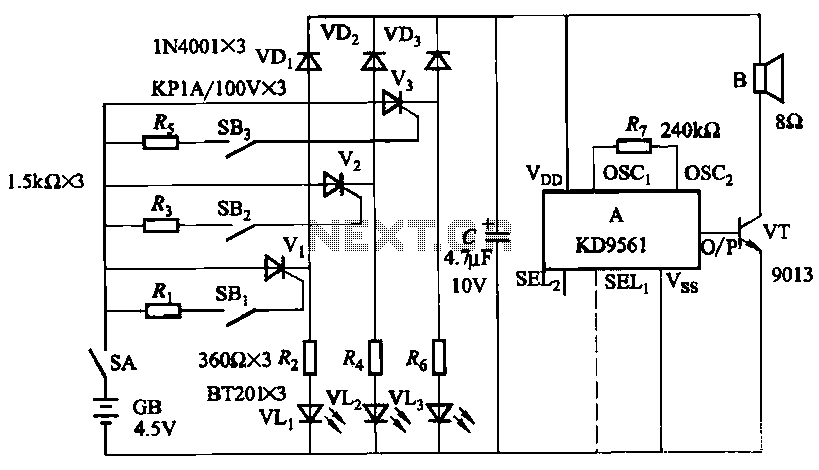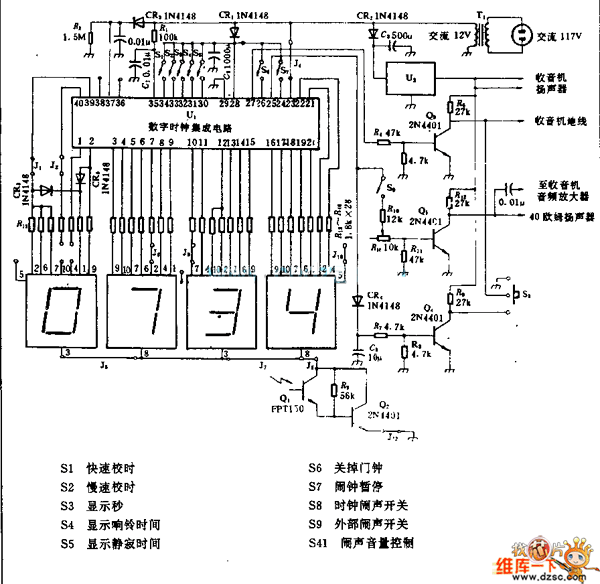
Two Relay-Based Motorcycle Alarm Circuits
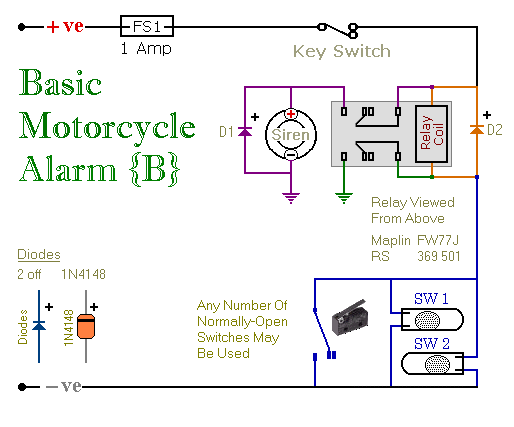
These are two easy-to-build relay-based alarms. They can be used to protect a motorcycle, but they have many additional applications. When using relays with 6-volt coils, they can safeguard a classic bike. Both alarms are compact, with completed boards occupying approximately half a cubic inch (8 cc). The standby current is zero, ensuring that they do not drain the battery. Circuit Number Five utilizes a SPCO/SPDT relay, although a SPST relay is sufficient. If the provided veroboard layout is used, the specified relay style must be adhered to, but the alarm can be constructed with any available relay style. Multiple normally-open switches can be employed. Mercury switches should be positioned to close when the steering is moved or when the bike is lifted off its side-stand or pushed forward off its center-stand. Micro-switches can be used to secure removable panels and the lids of panniers. When one of the trigger switches is activated, the relay energizes and the siren sounds. The subsequent behavior can be customized. If the circuit is built as illustrated, the siren will continue to sound until manually turned off or until the battery is depleted. However, omitting D3 will cause the siren to stop immediately once the trigger switch is reopened. The former configuration is preferable when within earshot of the machine, while the latter is more suitable for longer absences to avoid disturbances. Including a SPST switch in series with D3 allows selection of the most appropriate behavior for the situation. Relay coils and certain sounders generate high reverse-voltage spikes that can damage sensitive electronic components. D1 and D2 are included to short-circuit these spikes, providing protection. While the alarm circuit itself is not at risk, the presence of other electronic equipment on the same power supply warrants the inclusion of the diodes as a precaution. If there are no concerns regarding potential damage, the diodes can be omitted. Circuit Number Six employs a DPCO/DPDT relay, although only a DPST relay is necessary. Similar to Circuit Number Five, the veroboard layout requires adherence to the specified relay style, but any available relay can be utilized. Multiple normally-open switches are applicable. Mercury switches should be positioned to close when the steering is moved or when the motorcycle is lifted off its side-stand or pushed forward off its center-stand. Micro-switches can also be used for removable panels and pannier lids. When a trigger switch is closed, the relay energizes and the siren sounds, with customizable subsequent actions. If constructed as shown, the siren will sound until turned off or the battery is exhausted. Excluding the yellow solder bridge in the top left corner will allow the siren to cease immediately when the trigger switch is reopened. The configuration choice depends on proximity to the machine and the desire to avoid nuisance alarms. A SPST switch can replace the yellow solder bridge for behavior selection. Additionally, D1 and D2 serve to protect against high reverse-voltage spikes generated by relay coils and sounders, which could potentially damage sensitive components.
The described relay-based alarm circuits are designed for versatility and compactness, making them suitable for a variety of applications beyond motorcycle security. The use of relays allows for the integration of multiple triggering mechanisms, such as mercury and micro-switches, enabling users to customize the alarm's response to various conditions. The choice of relay type, whether SPST, SPDT, DPST, or DPDT, offers flexibility in design while maintaining functionality.
The inclusion of diodes D1 and D2 is critical for safeguarding any connected electronic components from voltage spikes that may occur during relay operation. This precaution is especially important in installations where sensitive devices share the same power supply. The configuration options provided through the inclusion of SPST switches or solder bridges allow users to tailor the alarm's behavior based on their specific needs, whether they are present or away from the motorcycle.
Overall, these relay-based alarm systems are a practical solution for enhancing security in various settings, providing reliable operation with minimal power consumption. The compact design and ease of assembly make them accessible for hobbyists and professionals alike, ensuring that users can implement effective security measures without significant investment in space or resources.These are two - easy to build - relay-based alarms. You can use them to protect your motorcycle - but they have many more applications. If you use relays with 6-volt coils - they`ll protect your "Classic Bike". Both alarms are very small. The completed boards occupy about half a cubic-inch - 8 cc. The standby current is zero - so they won`t drain your battery. Circuit Number Five uses a SPCO/SPDT relay - but you really only need to use a SPST relay. If you are going to use the veroboard layout provided - you`ll need to use the style of relay specified. But you can build the alarm using whatever style of relay you have available. Any number of normally-open switches may be used. Fit the mercury switches so that they close when the steering is moved or when the bike is lifted off its side-stand or pushed forward off its centre-stand.
Use micro-switches to protect removable panels and the lids of panniers etc. When one of the trigger-switches is closed - the relay will energize and the siren will sound. You can choose what happens next. If you build the circuit as shown, the siren will continue to sound until you turn it off - or until the battery is exhausted. But, if you leave out D3 - the siren will stop sounding immediately the trigger-switch is re-opened. While you`re within earshot of your machine - the former configuration is best. You can always turn off the alarm yourself. But if you are going to be away from your bike for any length of time - and you don`t want to cause a nuisance - then the latter configuration is probably more suitable.
If you include a SPST switch in series with D3 - you can select the behaviour that best suits the circumstances at any given time. Relay coils and some sounders produce high reverse-voltage spikes that will destroy sensitive electronic components.
D1 and D2 are there to short-circuit these spikes before they can do any damage. Although there is nothing in the alarm circuit itself that could be damaged - I have no idea what other electronic equipment might be connected to the same power supply. So I included the two diodes as a precaution. If you`re satisfied that there`s nothing on your bike that might be damaged in this way - you can leave out the two diodes.
Circuit Number Six uses a DPCO/DPDT relay - but you really only need to use a DPST relay. If you are going to use the veroboard layout provided - you`ll need to use the style of relay specified. But you can build the alarm using whatever style of relay you have available. Any number of normally-open switches may be used. Fit the mercury switches so that they close when the steering is moved or when the bike is lifted off its side-stand or pushed forward off its centre-stand.
Use micro-switches to protect removable panels and the lids of panniers etc. When one of the trigger-switches is closed - the relay will energize and the siren will sound. You can choose what happens next. If you build the circuit as shown, the siren will continue to sound until you turn it off - or until the battery is exhausted. But, if you leave out the (yellow) solder-bridge in the top left-hand corner - the siren will stop sounding immediately the trigger-switch is re-opened.
While you`re within earshot of your machine - the former configuration is best. You can always turn off the alarm yourself. But if you are going to be away from your bike for any length of time - and you don`t want to cause a nuisance - then the latter configuration is probably more suitable. Connect a SPST switch in place of the (yellow) solder-bridge - and you can select the behaviour that best suits the circumstances at any given time.
Relay coils and some sounders produce high reverse-voltage spikes that will destroy sensitive electronic components. D1 and D2 are there to short-circuit these spikes before they can do any damage. Although there is nothing in the alarm circuit itself that could be damaged - I have no 🔗 External reference
The described relay-based alarm circuits are designed for versatility and compactness, making them suitable for a variety of applications beyond motorcycle security. The use of relays allows for the integration of multiple triggering mechanisms, such as mercury and micro-switches, enabling users to customize the alarm's response to various conditions. The choice of relay type, whether SPST, SPDT, DPST, or DPDT, offers flexibility in design while maintaining functionality.
The inclusion of diodes D1 and D2 is critical for safeguarding any connected electronic components from voltage spikes that may occur during relay operation. This precaution is especially important in installations where sensitive devices share the same power supply. The configuration options provided through the inclusion of SPST switches or solder bridges allow users to tailor the alarm's behavior based on their specific needs, whether they are present or away from the motorcycle.
Overall, these relay-based alarm systems are a practical solution for enhancing security in various settings, providing reliable operation with minimal power consumption. The compact design and ease of assembly make them accessible for hobbyists and professionals alike, ensuring that users can implement effective security measures without significant investment in space or resources.These are two - easy to build - relay-based alarms. You can use them to protect your motorcycle - but they have many more applications. If you use relays with 6-volt coils - they`ll protect your "Classic Bike". Both alarms are very small. The completed boards occupy about half a cubic-inch - 8 cc. The standby current is zero - so they won`t drain your battery. Circuit Number Five uses a SPCO/SPDT relay - but you really only need to use a SPST relay. If you are going to use the veroboard layout provided - you`ll need to use the style of relay specified. But you can build the alarm using whatever style of relay you have available. Any number of normally-open switches may be used. Fit the mercury switches so that they close when the steering is moved or when the bike is lifted off its side-stand or pushed forward off its centre-stand.
Use micro-switches to protect removable panels and the lids of panniers etc. When one of the trigger-switches is closed - the relay will energize and the siren will sound. You can choose what happens next. If you build the circuit as shown, the siren will continue to sound until you turn it off - or until the battery is exhausted. But, if you leave out D3 - the siren will stop sounding immediately the trigger-switch is re-opened. While you`re within earshot of your machine - the former configuration is best. You can always turn off the alarm yourself. But if you are going to be away from your bike for any length of time - and you don`t want to cause a nuisance - then the latter configuration is probably more suitable.
If you include a SPST switch in series with D3 - you can select the behaviour that best suits the circumstances at any given time. Relay coils and some sounders produce high reverse-voltage spikes that will destroy sensitive electronic components.
D1 and D2 are there to short-circuit these spikes before they can do any damage. Although there is nothing in the alarm circuit itself that could be damaged - I have no idea what other electronic equipment might be connected to the same power supply. So I included the two diodes as a precaution. If you`re satisfied that there`s nothing on your bike that might be damaged in this way - you can leave out the two diodes.
Circuit Number Six uses a DPCO/DPDT relay - but you really only need to use a DPST relay. If you are going to use the veroboard layout provided - you`ll need to use the style of relay specified. But you can build the alarm using whatever style of relay you have available. Any number of normally-open switches may be used. Fit the mercury switches so that they close when the steering is moved or when the bike is lifted off its side-stand or pushed forward off its centre-stand.
Use micro-switches to protect removable panels and the lids of panniers etc. When one of the trigger-switches is closed - the relay will energize and the siren will sound. You can choose what happens next. If you build the circuit as shown, the siren will continue to sound until you turn it off - or until the battery is exhausted. But, if you leave out the (yellow) solder-bridge in the top left-hand corner - the siren will stop sounding immediately the trigger-switch is re-opened.
While you`re within earshot of your machine - the former configuration is best. You can always turn off the alarm yourself. But if you are going to be away from your bike for any length of time - and you don`t want to cause a nuisance - then the latter configuration is probably more suitable. Connect a SPST switch in place of the (yellow) solder-bridge - and you can select the behaviour that best suits the circumstances at any given time.
Relay coils and some sounders produce high reverse-voltage spikes that will destroy sensitive electronic components. D1 and D2 are there to short-circuit these spikes before they can do any damage. Although there is nothing in the alarm circuit itself that could be damaged - I have no 🔗 External reference
